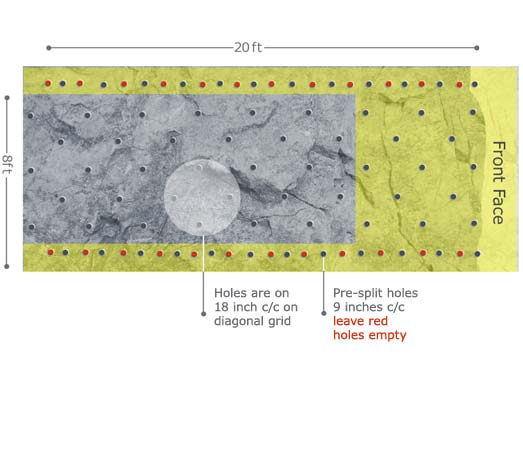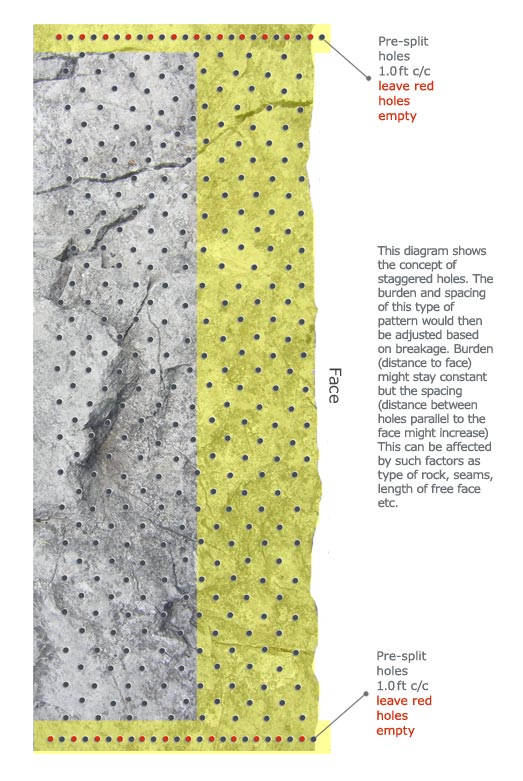Mass Rock Staggered Hole Pattern
This example shows a situtaion where there is a large area of mass rock, but it still has defined sides. Those sides should have a presplit line drilled to help outline
the area to be removed. As a rule Rock Splitting Mortar will usually not break beyond the outside holes and having a "pre split" type outer boundary drill line helps
define that cut line. Also if there is a "back line" to the excavation it should also have "pre split" line.
Lay out holes based on bottom footprint of rock, and be sure and consider the toe area, if necessary drill angled toe holes to help start a face. Lay the holes out so
that if you drill toe holes they do not intersect the vertical holes. The toe area acts as a brace and can make breaking difficult until it is removed.
Fill holes in yellow area first, and then fill next area etc, it does not hurt to fill only five to seven burden holes back from a face at a time, delaying filling by
6 to 8 hours. However, it does not really hurt to load further back. The Rock Splitting Mortar will start expanding and stress the rock, and as relief develops, the
cracking will show up more. If an area seems to be bound, going back over it with empty relief holes in a line between a diagonal line of holes has helped free up an
area. If you think the holes are not working well enough it is better to add new holes with product, the product in the existing holes is working it and it is better
to compliment existing holes.





